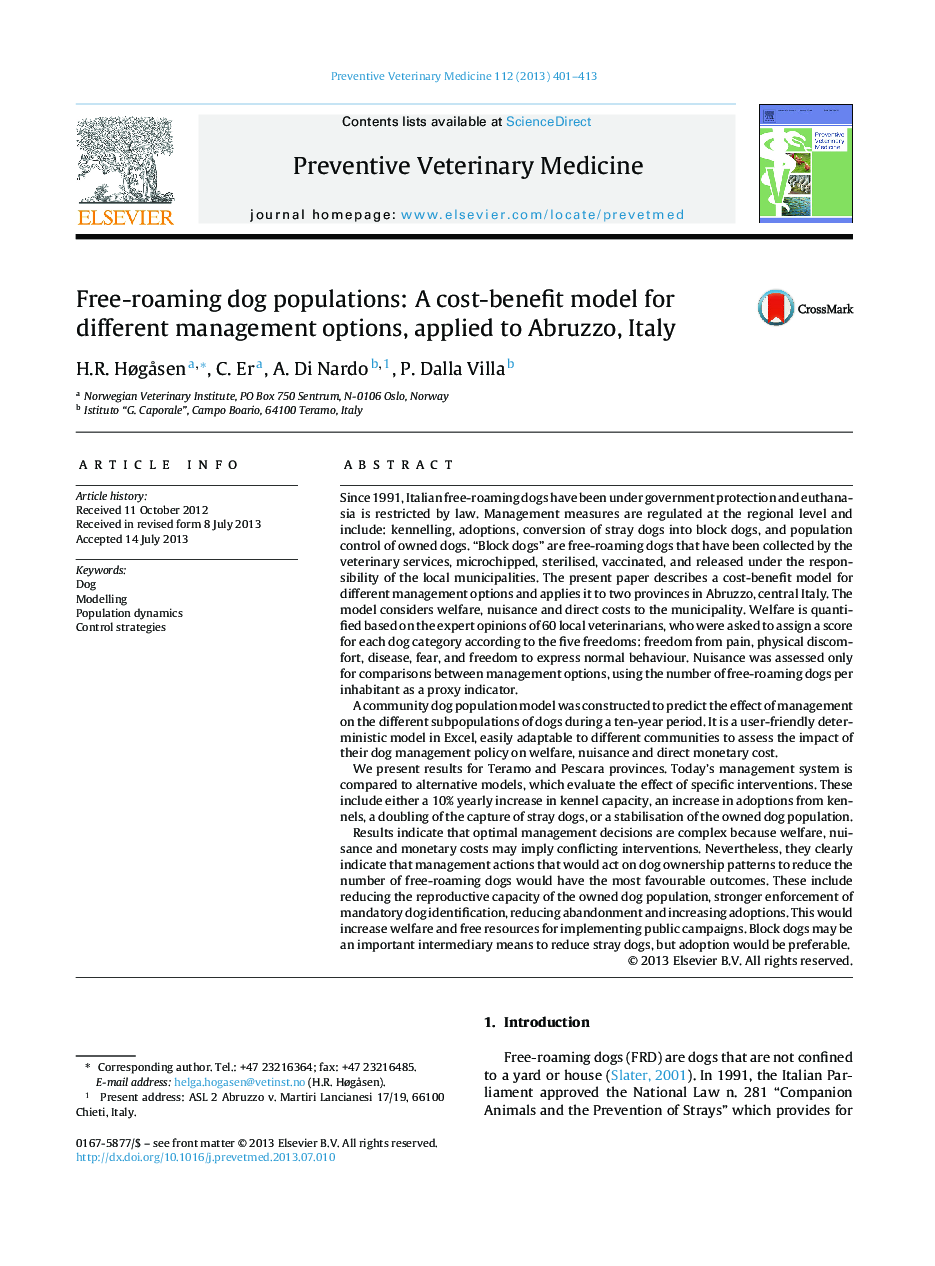| Article ID | Journal | Published Year | Pages | File Type |
|---|---|---|---|---|
| 5793647 | Preventive Veterinary Medicine | 2013 | 13 Pages |
Abstract
Results indicate that optimal management decisions are complex because welfare, nuisance and monetary costs may imply conflicting interventions. Nevertheless, they clearly indicate that management actions that would act on dog ownership patterns to reduce the number of free-roaming dogs would have the most favourable outcomes. These include reducing the reproductive capacity of the owned dog population, stronger enforcement of mandatory dog identification, reducing abandonment and increasing adoptions. This would increase welfare and free resources for implementing public campaigns. Block dogs may be an important intermediary means to reduce stray dogs, but adoption would be preferable.
Related Topics
Life Sciences
Agricultural and Biological Sciences
Animal Science and Zoology
Authors
H.R. Høgåsen, C. Er, A. Di Nardo, P. Dalla Villa,
